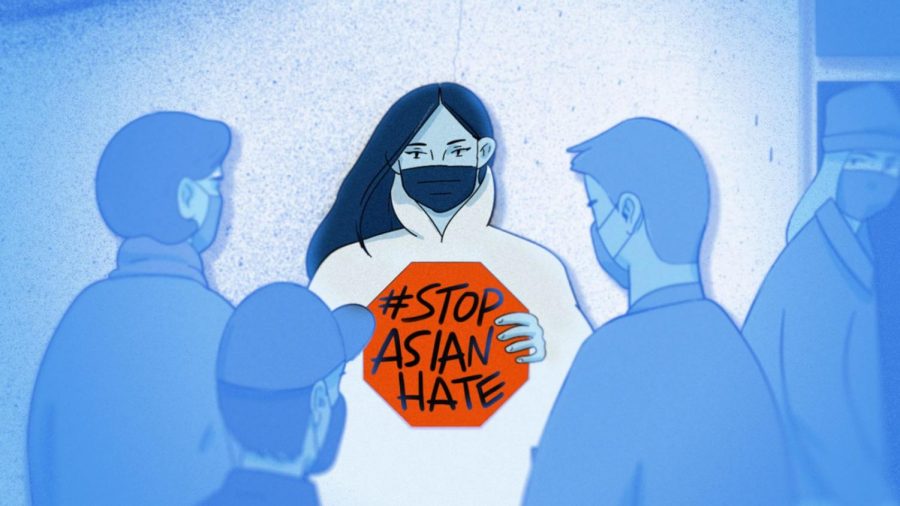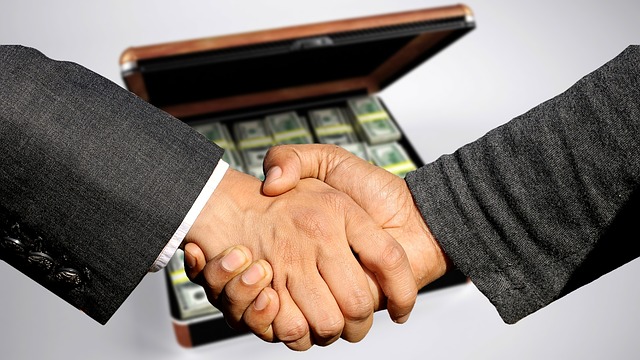The History of Anti-Asian Violence in the U.S.
May 14, 2021
On March 16, 2021, a man opened fire in three Asian-run spas and massage parlors in the Atlanta area, killing eight. Six of those victims were of Asian descent: Soon Chung Park (74), Hyun Jung Grant (51), Suncha Kim (69), Yong Ae Yue (63), Delaina Ashley Yaun (33), Xiaojie Tan (49), and Daoyou Feng (44).
The media rarely focuses on anti-Asian racism. When news of the Atlanta shootings broke, the suggestion of an anti-Asian hate crime was still unfamiliar to many. However, for the Asian American communities, this shooting was just one of many instances where Asians have been targeted for their race. Between March 2020 and February 2021, there were nearly 3,800 self-reports of anti-Asian hate incidents. The Center for the Study of Hate and Extremism surveyed police departments in sixteen major cities across the country and found that anti-Asian hate crimes had more than doubled between 2019 and 2020, but this number may be an understatement, as some researchers have stated that “It is likely that there is massive underreporting of hate crime in Asian-American communities.”
Although unbeknownst to many, the nation’s history has been littered with anti-Asian violence that goes all the way back to the 18th century.
1790: the Naturalization Act barred the naturalization of any non-white person in the United States. Asian immigrants were largely affected as they were categorized as “aliens ineligible for citizenship” and their rights to property ownership, representation in courts, public employment, and voting were limited.
1854: Chinese immigrants began coming to the United States in the 1850s, willing to work dangerous, low-wage jobs in mining and railroad construction. The racist trope of “Asians coming to steal White jobs” was born, and anti-Asian sentiments rose. In the case of People V. Hall, California’s Supreme Court ruled that the testimony of a Chinese man who witnessed George Hall shoot and kill another Chinese immigrant was inadmissible because the Chinese were “a race of people whom nature has marked as inferior, and who are incapable of progress or intellectual development beyond a certain point”. This ultimately established a precedent for anti-Asian violence to go unpunished.
1871: The Chinese massacre in Los Angeles occurred on October 24, 1871, following the murder of a white man caught in the crossfire between rival Chinese gangs. More than 500 white and Hispanic rioters then attacked L.A’s small Chinese community. Nearly 20 Chinese men and boys were lynched and hung anywhere the rioters could find a beam to string a noose. Eight of the rioters were convicted of manslaughter, but their convictions were eventually overturned.
1875: The Page Act prohibited women who had “lewd and immoral purposes” from entering the U.S. The Page Act was enforced against Chinese women who were trying to join Chinese men already working in the United States in an effort to restrict further Asian immigration.
1882: The Chinese Exclusion Act banned the immigration of all Chinese laborers and declared Chinese immigrants ineligible for naturalization. This was the first law to place a restriction on immigration to the United States. The act was extended for more than 60 years and wasn’t repealed until 1943.
1885: In the Rock Springs massacre, 150 white miners in Wyoming attacked their Chinese coworkers, burning 79 homes, killing 28, wounding 15, and driving several hundred more out of town. Those who fled to a nearby town were tricked into boarding a train they were told would take them to safety, but actually took them back to Rock Springs, where they were forced back to work, where federal troops stayed for 13 years to keep them in line.
1900: During the San Francisco plague outbreak, the bubonic plague struck San Francisco, most likely from a ship from Australia. However, because the first stateside victim was a Chinese immigrant, the whole community became a scapegoat overnight. Chinatown was surrounded by police, who preventing everyone but white residents from going in or out. Chinese residents were also subjected to home searches and property destruction. Parallels between this situation and the racism aimed at Asian Americans during the COVID-19 pandemic can be drawn.
1917: Some of the strict immigration laws ever were passed, including the Immigration Act of 1917. Also known as the Asiatic Barred Zone Act or the Literacy Act, this act built upon previous acts like the Chinese Exclusion Act of 1882. Immigration was restricted as nativist sentiment grew, and Congress bypassed several vetos from President Wilson to pass the act, which included: raising taxes on adult immigrants, requiring a literacy test for immigrants over the age of 16, expanding the list of “undesirables”, and barring all immigrants from the Middle East to Southeast Asia from entering the country.
1922-1923: Landmark cases by the Supreme Court on citizenship occurred in separate cases. In Takao Ozawa v. United States, a Japanese-born man who had lived in the United States for 20 years was deemed ineligible for naturalization. In 1923, the Supreme Court ruled an Indian-born man was not white and therefore ineligible for naturalization in United States v. Bhagat Singh Thind.
1924: The Johnson Reed Act drastically limited the number of immigrants allowed into the United States through a national origins quota and completely blocked all immigrants from Asia.
1942-1945: FDR signed Executive Order 9066, allowing people under suspicion to be forced into inland internment camps. During World War II, over 100,000 people of Japanese descent, most of whom were U.S. citizens, were forced into Japanese internment camps during World War II. The conditions inside the camps were extreme, and at the end of the years-long internment period, no spies were found. When they were freed, Japanese American families returned to find their homes and businesses vandalized or confiscated.
The late 1970s to the early 1980s: At the end of the Vietnam War, the United States resettled many Vietnamese people who had fled communism. In Texas, many of those immigrants took up shrimping, and the Ku Klux Klan claimed that the Vietnamese were stealing American jobs. The KKK began to patrol the coast of Texas, attacking and setting boats owned by Vietnamese people on fire.
1982: In June of 1982, Vincent Chin, a Chinese American man was in Detroit to celebrate his upcoming wedding. Two white men then beat him to death, blaming him for “the Japanese taking their auto industry jobs. The murder of Vincent Chin marked the first time Asian-Americans were treated as a federally protected class in a civil rights case. His murderers took a manslaughter plea bargain, with a possible sentence of 15 years. Instead, the judge gave the men a lenient sentence of probation and a $3,000 fine. This sentence outraged the Asian American community and sparked a national movement for Asian American rights.
1992: Tensions between the Black and Korean American communities had been building in Los Angeles for years. Then on April 29, 1992, the three white police officers caught on camera beating Rodney King were acquitted. Riots ensued, and Korean American businesses became the main targets. The nearly week-long L.A. Riots. killed more than 50 people, injured more than 1,000 people, and caused about $1 billion in damage, about half of which was sustained by Korean-owned businesses.
2012: At the Sikh Temple of Wisconsin, a white supremacist fatally shot six people at the. The Sikh Temple shooting was one of many attacks that came amid a surge of post-9/11 violence against those perceived to be Muslim, including many South Asians.
2020: Then-president Donald Trump fueled the use of negative language geared against the Asian community by tweeting “Chinese virus” and “Kung Flu” in reference to the coronavirus. The last year has seen Anti-Asian hate crimes surge, with a 150% increase n reported hate crimes.
2021: Georgia shootings: Asian Americans were galvanized to speak up about their experiences with racism and hate crimes in the United States after reports of the March 16 shootings near Atlanta, Georgia. Six Asian women were killed.
The described events above only serve to scratch the surface of the history of anti-Asian hate crimes. Underreporting has become ingrained within the Asian American community, fueled by a distrust of law enforcement, a lack of media representation, and the model minority myth.
So… how do we help?
One way to support the Asian American/Pacific Islander (AAPI) community is by raising awareness of the long history of discrimination. Educating yourself on this history of the AAPI community can help better understand the Asian American experience and the need for change in various spheres; social, economic, and political. Get involved in learning about the AAPI communities; listen to people who have intimate knowledge and ideas on how to help their own communities. By listening and learning, we can cultivate our empathy and continue to advance our society.












